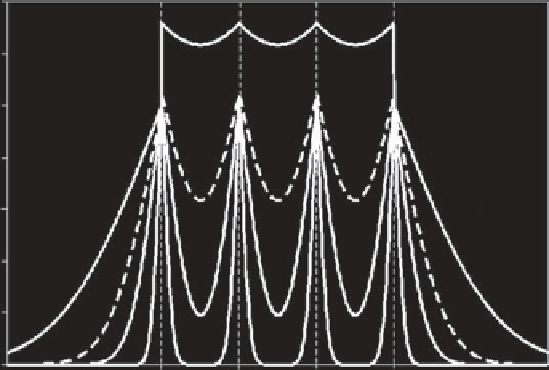Environmental Engineering Reference
In-Depth Information
0.7
100%
0.6
0.5
50%
0.4
0.3
100%
30%
0.2
0.1
50%
10%
0.0
bad
poor
moderate
good
high
Figure 6.3.
Plot of the probability of misclassifying a site into a different status class
versus its true environmental quality ratio (EQR) for a range of error/uncertainty
standard deviations in the observed EQR value. The EQR range has been divided into the
five WFD classes, with the middle three of equal width, W. Plots are shown for standard
deviation equal to 10, 30 and 50% of W. Uncertainty is derived from various sources
associated with sampling sites at fixed locations in space and time (see text for fuller
explanation). The less uncertainty there is associated with an assessment, the more
likely a site will be correctly classified. Note that uncertainty has the largest influence
near class boundaries: those sites that have a score that corresponds with a class boundary
have a probability of misclassification of at least 0.5 as they could be either side of the
boundary.
Hence, it is necessary to identify how much of the variation can actually be
attributed to directional change as a result of environmental stress or remedia-
tion (item 4 above). Put simply, how much of a difference is required before the
alarm bells should be rung, or the glasses raised and a success toasted. The
importance of this uncertainty is now paramount, as the WFD requires that all
inland and coastal waters within defined river basin districts must reach at
least 'good' status by 2015. Any water bodies failing to reach this level must be
improved by the implementation of what are often likely to be expensive and
politically difficult catchment management plans. There is a lot of money
riding on how sure we are that water bodies have failed to reach good status.
Considerable effort was put into quantifying the uncertainty associated with
RIVPACS assessments both prior and subsequent to the implementation of the
WFD (Clarke
1997
), and we use the understanding developed for this advanced
tool to help illustrate the requirements for other tools.
In the UK, CEH conduct regular quality assurance audits of the environment
agencies, quantifying sample processing errors, where samples are re-sorted

